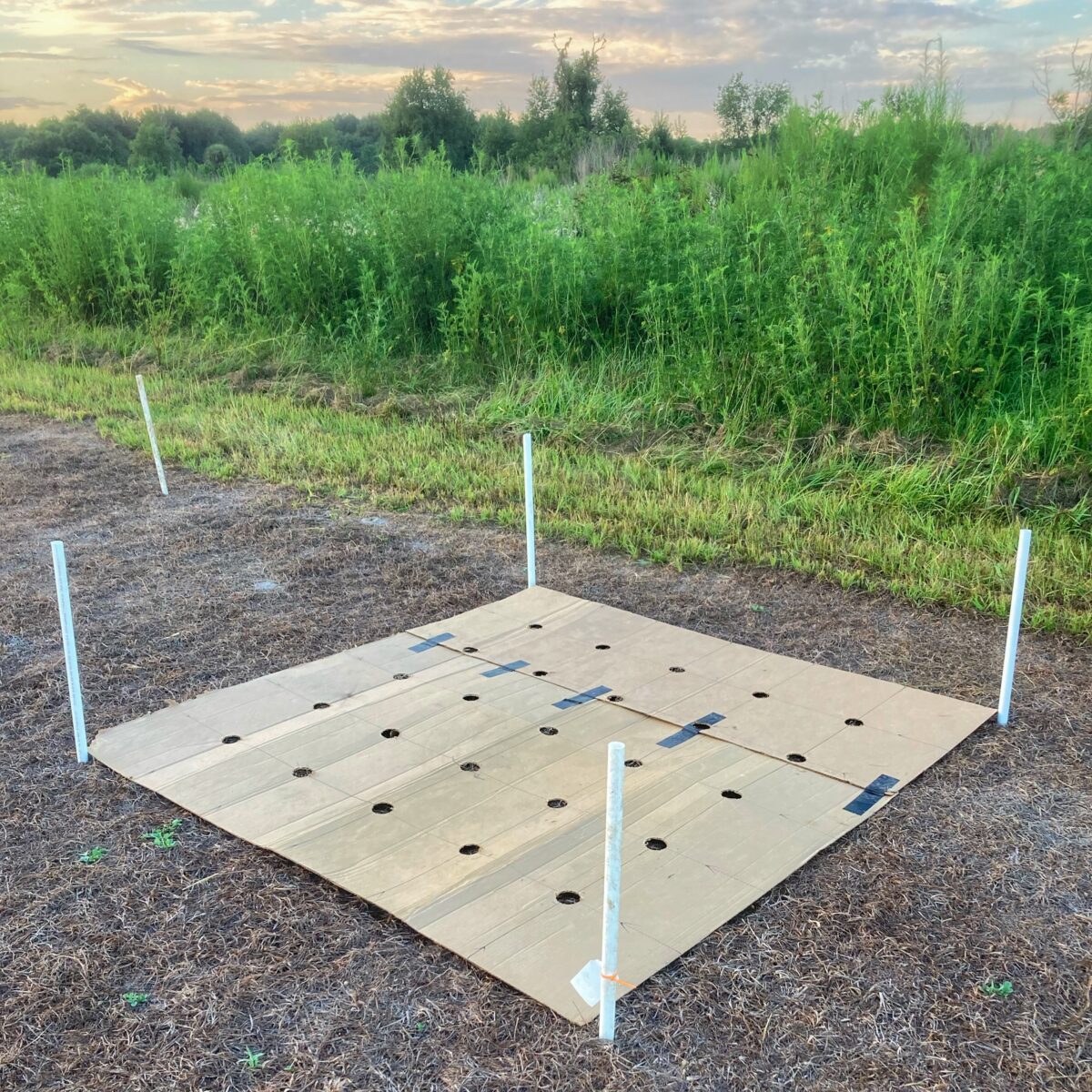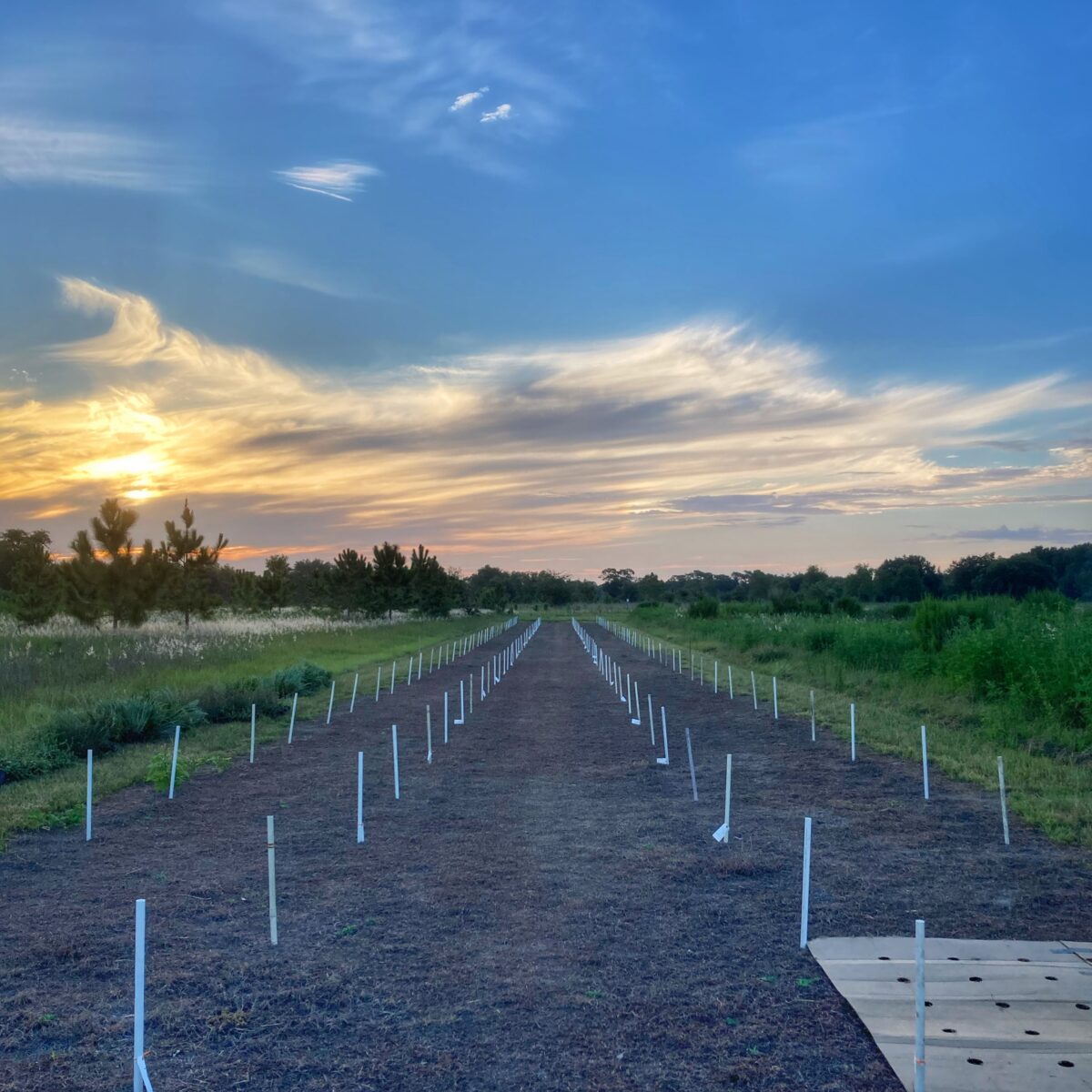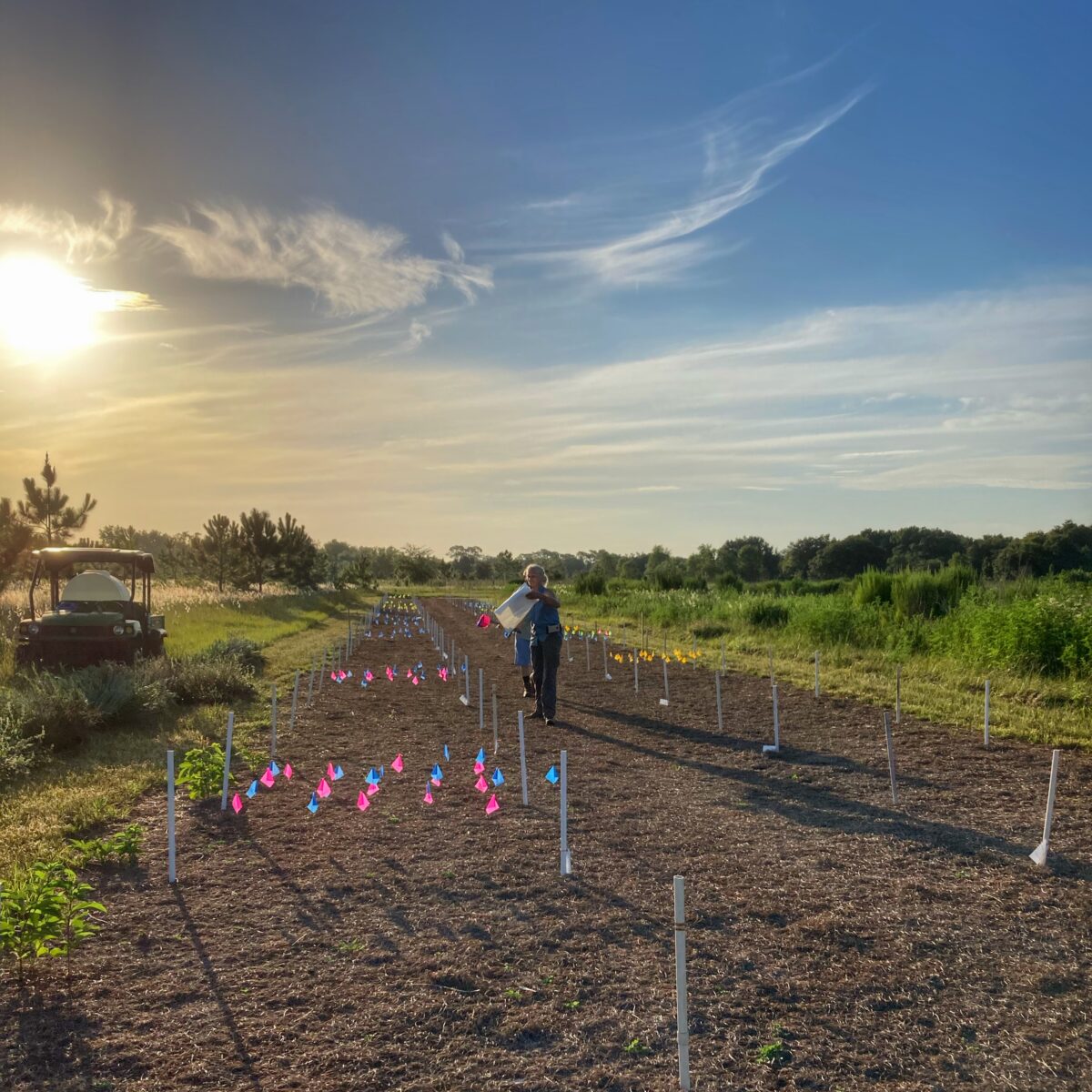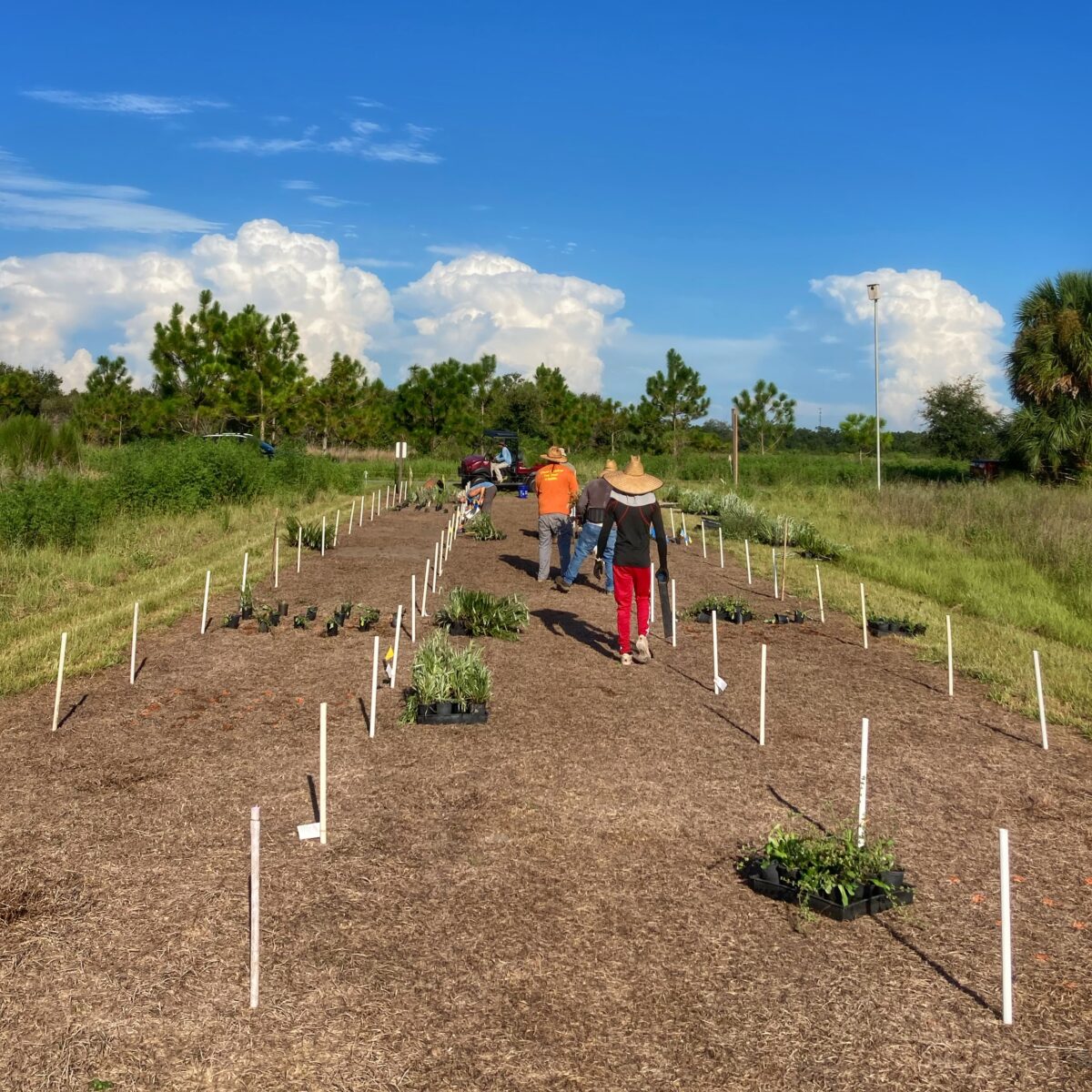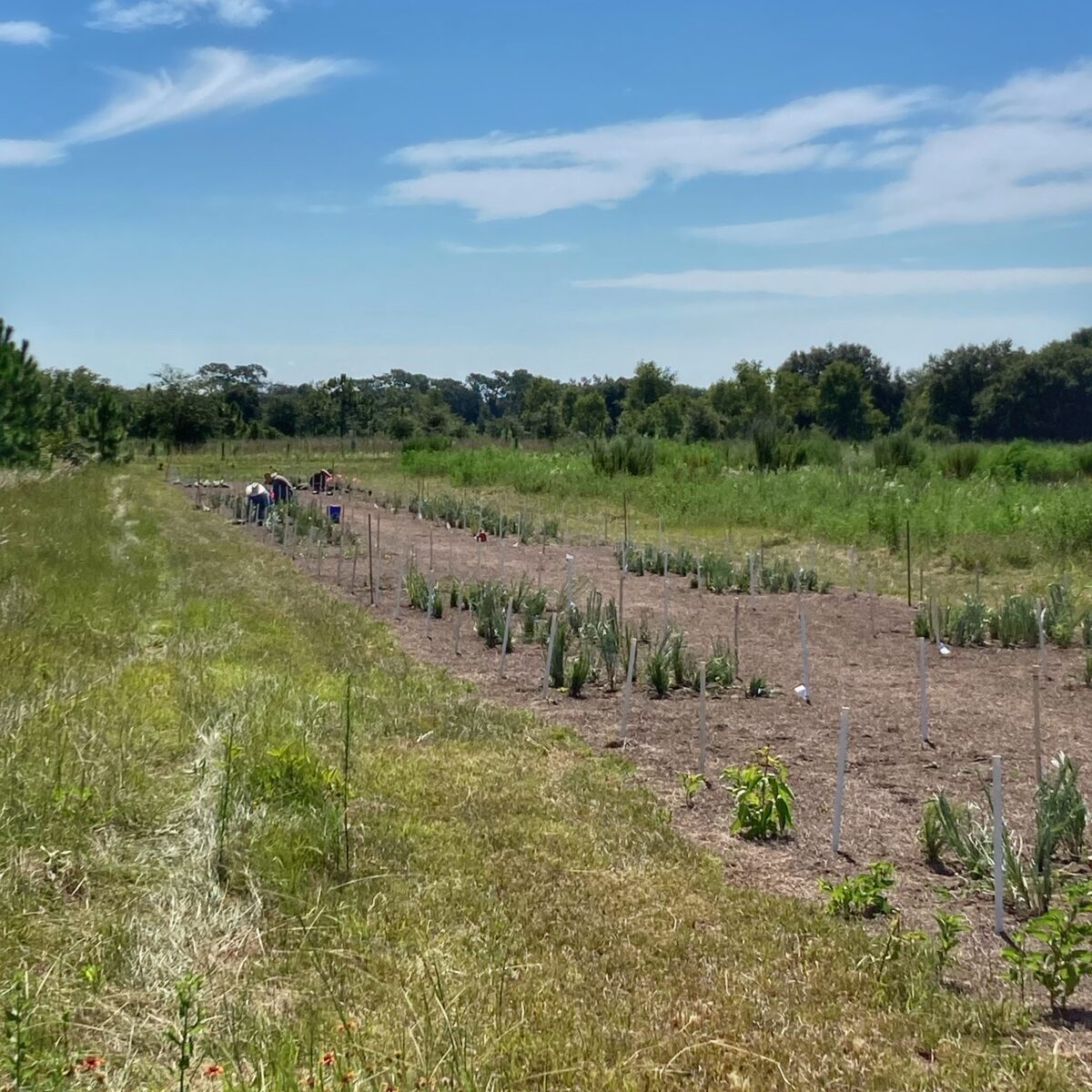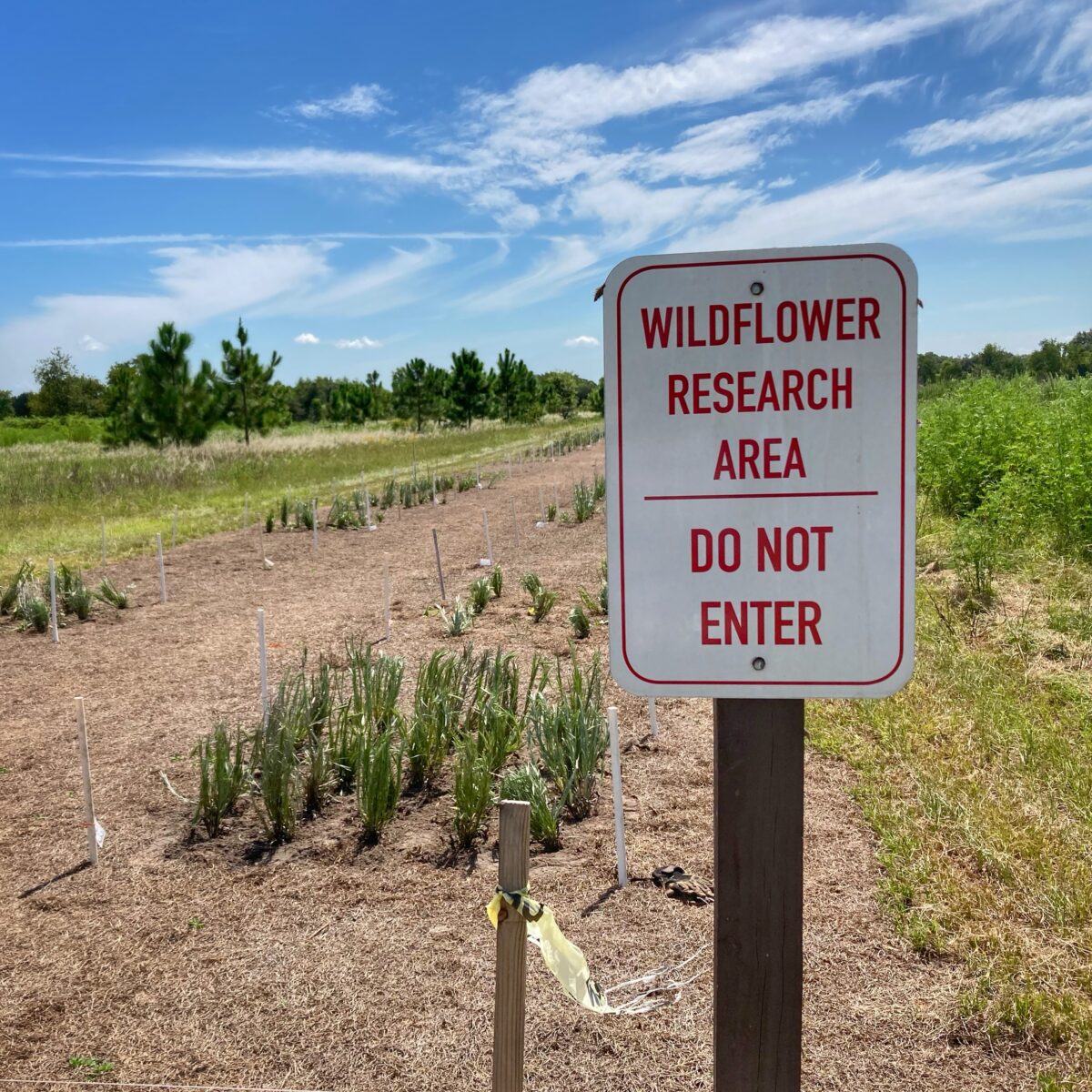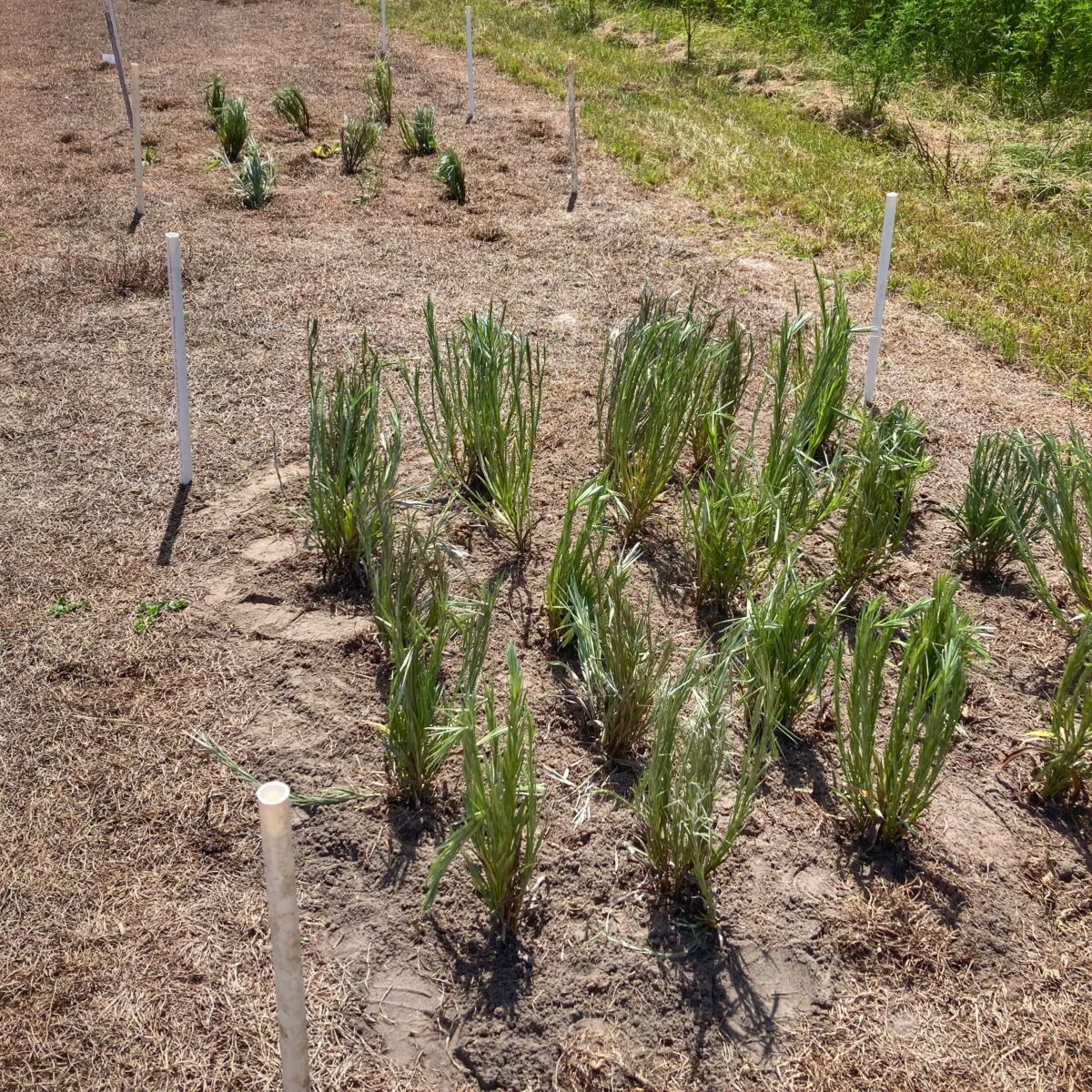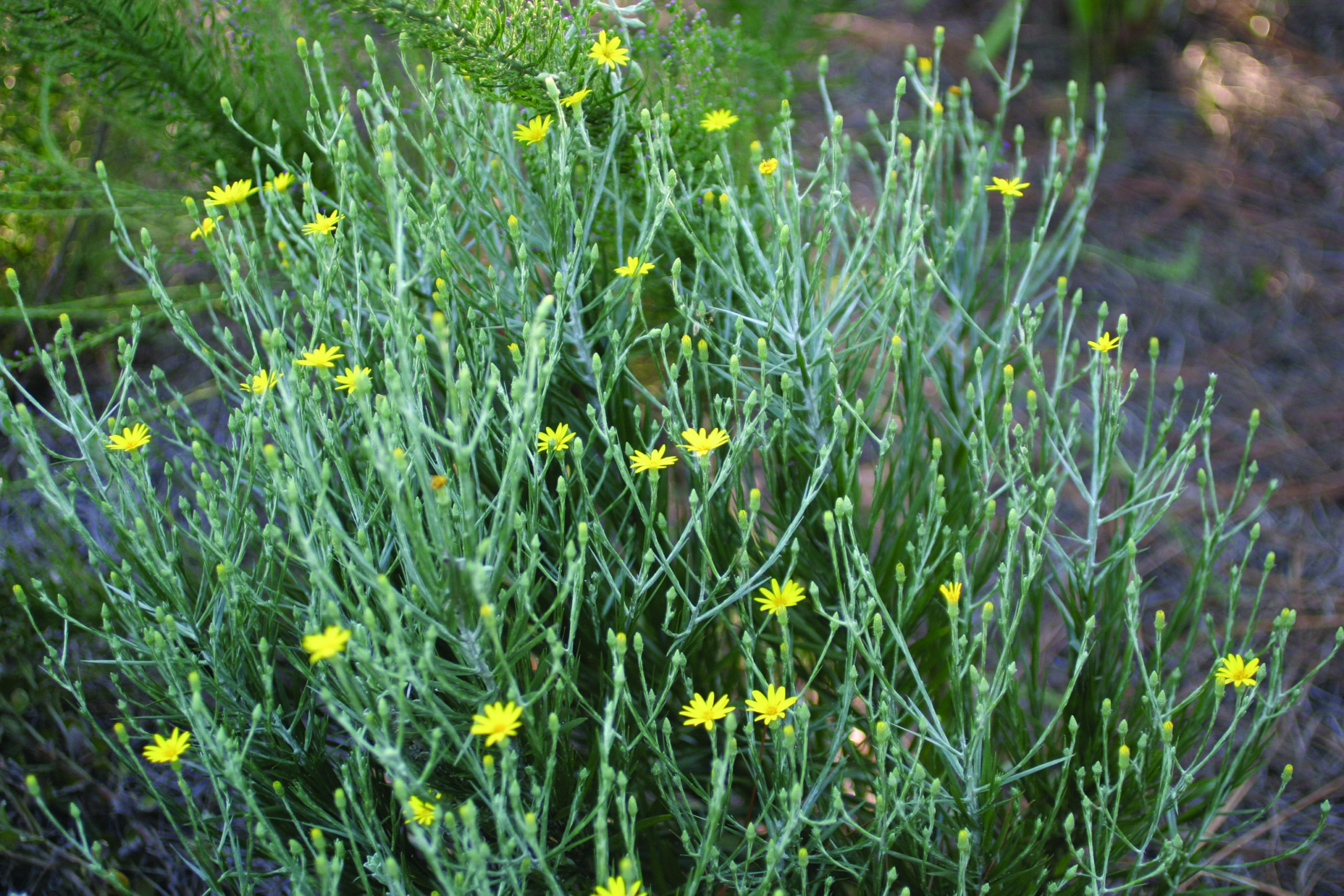Research seeks to identify groundcovers with greater ecological value for roadsides and utilities
Pictured above: Narrowleaf silkgrass (Pityopsis tracyii) by Troy Springer
Bahiagrass (Paspalum notatum) is a primary groundcover used on roadsides, utility easements and solar farms. It is easy to maintain by regular mowing; however, this non-native species provides little ecological value. The use of native wildflower species in these areas is preferable as they will provide food and habitat for pollinators and other small wildlife. The wildflowers, however, must be able to outcompete the Bahiagrass and perform similarly by withstanding harsh conditions and regular mowing regimens.
Two perennial species have been identified as being of potential use: Narrowleaf silkgrass (Pityopsis tracyii) and Lyreleaf sage (Salvia lyrata). Both species can tolerate a variety of soil and light conditions, respond well to mowing, and spread rapidly on their own — Pityopsis by underground rhizomes, and Salvia by prolific self-seeding. But their efficacy as alternatives to Bahiagrass are unknown.
Beginning in July of 2022, the Florida Wildflower Foundation will conduct a 3-4 year study at PEAR Park in Lake County to gain insight into the establishment, sustainability and performance of these two species in a Bahiagrass field. A simultaneous study will be conducted by Bok Tower Gardens on their campus to allow for the comparison of different variables. The results will be shared with FDOT, utility companies and other maintenance sectors.
Photos
